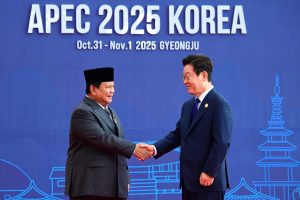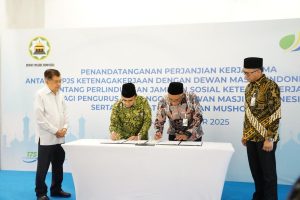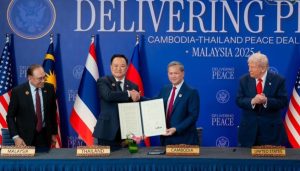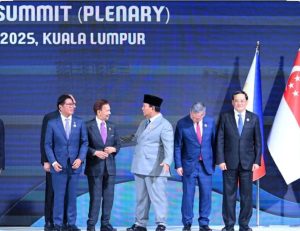
Workers loading shoes in an Indonesian factory.
Jakarta, 16 Rajab 1437/23 April 2016 (MINA) —The United Nations moved Indonesia onto the list of top 10 manufacturing nations, overtaking Russia and the U.K. as the archipelago works to encourage more industrial output amid shrinking revenue from volatile commodity exports.
China passed the U.S. to top the list, released Thursday, which ranks countries according to manufacturing value added, an indicator of industrial development.
Indonesia’s improved showing to No. 10, from 12th place the previous year, was based on its ability to keep its factories churning out goods during a global downturn, largely to feed domestic demand, said Shyam Upadhyaya, chief statistician at the United Nations Industrial Development Organization.
The industrial sector now accounts for close to a quarter of Indonesia’s gross domestic product, according to the U.N. data. That is partly because lower prices for commodities such as coal and palm oil have lessened their contribution, Mi’raj Islamic News Agency (MINA) reported, quoting Wall Street Journal.
Also Read: Indonesia, UAE Forge Strategic Partnership to Enhance Islamic Education
That has also reduced the country’s overall GDP growth rate, which slowed to 4.7% in 2015, its lowest in six years.
Indonesia’s industry ministry put the contribution of manufacturing to GDP at just over 18%, using its own data.
President Joko Widodo, elected in 2014, has sought to promote industry through improvements in productivity and fiscal policy.
“Right now Indonesia is boosting infrastructure and mounting major deregulation efforts,” said Steven Tabor, Indonesia country head at the Asian Development Bank. “As these constraints are eased, and as the quality of the labor force steadily improves…Indonesia will be well poised to boost downstream processing of its abundant raw materials and to integrate more into global manufacturing value chains.”
Also Read: Indonesia Pushes for MSME Strengthening and Cross-Border Crime Eradication at APEC
The country, the world’s fourth most populous, remains a difficult place to do business.
A lack of infrastructure prevents goods from getting to market efficiently, while low-skilled labor, high costs for raw materials such as steel and overregulation raise operating costs, analysts and businesses say.
But the U.N. data suggests that some traditional manufacturing mainstays such as textiles and tobacco are taking up a smaller share of total output, and that the contribution made by products such as chemicals, machinery and vehicles—which require more skilled workers and resources — are growing fast.
“It is a very positive development for innovating or making your industry more efficient,” Mr. Upadhyaya said. (T/R07/R01)
Also Read: Indonesia Increases Incentives for Non-Permanent Teachers Starting in 2026 to Mark Teachers’ Day
Mi’raj Islamic News Agency (MINA)



































 Mina Indonesia
Mina Indonesia Mina Arabic
Mina Arabic